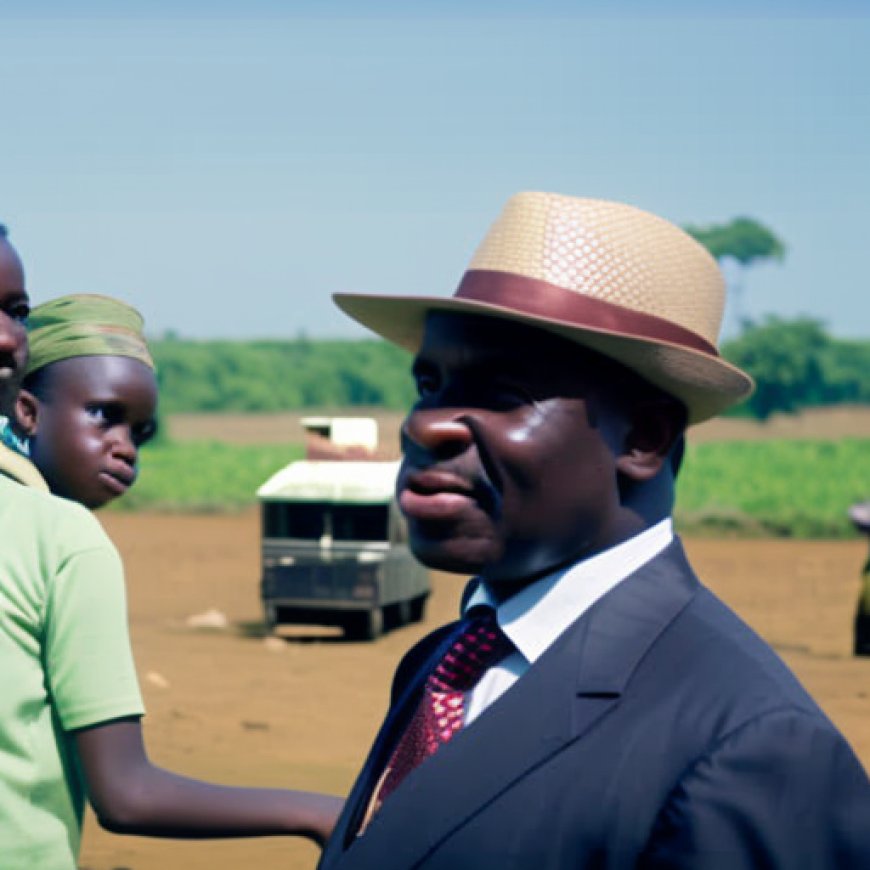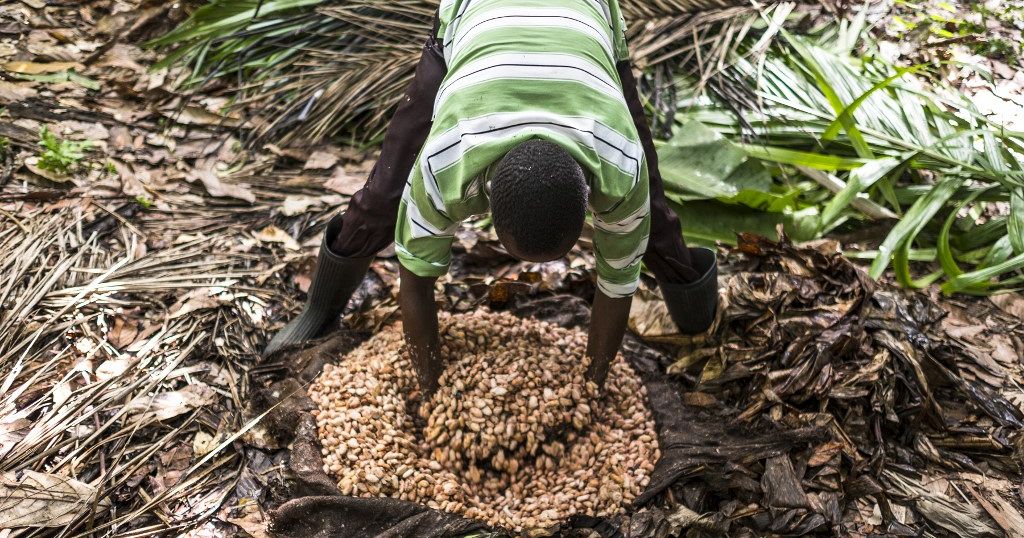DRC: Business leaders and politicians call for agricultural development | Africanews
DRC: Business leaders and politicians call for agricultural development Africanews English


Democratic Republic of Congo’s Agribusiness Forum Aims for Agricultural Transformation

Introduction
With its vast territory, agricultural production potential capable of feeding a quarter of the world’s population, climatic diversity, freshwater reserves, hydroelectric potential and a regional market of 260 million consumers, the Democratic Republic of Congo (DRC) enjoys major advantages. However, these assets appear insignificant when it comes to food insecurity affecting 27 million people. Every year, the country spends billions of dollars on food imports.
The Agribusiness Forum
In order to initiate a total transformation of the agricultural sector, an economic, social, and environmental issue, Kinshasa hosted its 1st Agribusiness Forum. The forum emphasized the importance of achieving the Sustainable Development Goals (SDGs) in the DRC.
The Importance of Building an Ecosystem
“Agriculture must not be dealt with in isolation. We need to build an ecosystem around this sector. We need industry, we need energy, we need roads, we need financing… only then we won’t fall into the mistakes of the past. Today, the DRC is losing around 3 billion dollars a year, importing cereals; whereas we are more than capable, with all our potential, of producing, and getting everything we need. We could feed the whole of Africa,” explains José Mpanda, Minister of Agriculture.
The Ten-Year Strategy
The government is aiming for a ten-year strategy that involves boosting farmers’ productivity, developing energy and transport infrastructures, improving the sector’s governance framework, and strengthening the human capital of the sector’s players. This strategy aligns with SDG 2: Zero Hunger and SDG 8: Decent Work and Economic Growth.
Financial Cooperation
As for the financial framework, Finance Minister Nicolas Kazadi is stepping up cooperation with all players involved, be they national and international economic operators, entrepreneurs and multinationals, public, private players, technical and financial partners. This collaboration is crucial for achieving SDG 17: Partnerships for the Goals.
Positive Outlook
Some stakeholders are already optimistic about the future of agriculture in the DRC. “I’m an enthusiast, I’m a believer in the potential of this country. For obvious reasons: for the natural resources, for its global location, I think with the next few years, maybe in the next decade, we’re going to see something close to what happened to Brazil twenty years ago: a huge development in agriculture and food distribution,” shares Andrei Mamedi, CEO of Manchester Agro Group.
The Challenge Ahead
Despite past initiatives, the paradox of food insecurity remains. Making agricultural transformation a priority is therefore a major challenge for the country’s head of state, Félix Tshisekedi. This challenge aligns with SDG 1: No Poverty and SDG 2: Zero Hunger. Additionally, with a decisive election in December, the government’s commitment to agricultural transformation will be tested.
SDGs, Targets, and Indicators
-
SDG 2: Zero Hunger
- Target 2.1: By 2030, end hunger and ensure access by all people, in particular the poor and people in vulnerable situations, including infants, to safe, nutritious and sufficient food all year round.
- Indicator 2.1.2: Prevalence of moderate or severe food insecurity in the population, based on the Food Insecurity Experience Scale (FIES).
-
SDG 7: Affordable and Clean Energy
- Target 7.1: By 2030, ensure universal access to affordable, reliable and modern energy services.
- Indicator 7.1.2: Proportion of population with access to electricity.
-
SDG 9: Industry, Innovation, and Infrastructure
- Target 9.1: Develop quality, reliable, sustainable and resilient infrastructure, including regional and transborder infrastructure, to support economic development and human well-being, with a focus on affordable and equitable access for all.
- Indicator 9.1.1: Proportion of the rural population who live within 2 km of an all-season road.
-
SDG 17: Partnerships for the Goals
- Target 17.6: Enhance North-South, South-South and triangular regional and international cooperation on and access to science, technology and innovation and enhance knowledge sharing on mutually agreed terms, including through improved coordination among existing mechanisms, in particular at the United Nations level, and through a global technology facilitation mechanism.
- Indicator 17.6.1: Number of science and/or technology cooperation agreements and programmes between countries, by type of cooperation.
Analysis
The issues highlighted in the article are related to food insecurity and the need for agricultural transformation in the Democratic Republic of Congo (DRC). Based on the content of the article, the following SDGs, targets, and indicators can be identified:
1. SDG 2: Zero Hunger
The article mentions that food insecurity affects 27 million people in the DRC. This aligns with SDG 2, which aims to end hunger and ensure access to safe and nutritious food for all people. The specific target under this SDG that can be identified is:
- Target 2.1: By 2030, end hunger and ensure access by all people, in particular the poor and people in vulnerable situations, including infants, to safe, nutritious and sufficient food all year round.
The article does not explicitly mention any indicators related to this target. However, the prevalence of moderate or severe food insecurity in the population can be used as an indicator to measure progress towards this target. This indicator is represented by:
- Indicator 2.1.2: Prevalence of moderate or severe food insecurity in the population, based on the Food Insecurity Experience Scale (FIES).
2. SDG 7: Affordable and Clean Energy
The article mentions the need for energy infrastructure development in the DRC. This aligns with SDG 7, which aims to ensure universal access to affordable, reliable, and modern energy services. The specific target under this SDG that can be identified is:
- Target 7.1: By 2030, ensure universal access to affordable, reliable and modern energy services.
The article does not explicitly mention any indicators related to this target. However, the proportion of the population with access to electricity can be used as an indicator to measure progress towards this target. This indicator is represented by:
- Indicator 7.1.2: Proportion of population with access to electricity.
3. SDG 9: Industry, Innovation, and Infrastructure
The article mentions the need for infrastructure development in the DRC to support agricultural transformation. This aligns with SDG 9, which aims to develop quality, reliable, sustainable, and resilient infrastructure. The specific target under this SDG that can be identified is:
- Target 9.1: Develop quality, reliable, sustainable and resilient infrastructure, including regional and transborder infrastructure, to support economic development and human well-being, with a focus on affordable and equitable access for all.
The article does not explicitly mention any indicators related to this target. However, the proportion of the rural population who live within 2 km of an all-season road can be used as an indicator to measure progress towards this target. This indicator is represented by:
- Indicator 9.1.1: Proportion of the rural population who live within 2 km of an all-season road.
4. SDG 17: Partnerships for the Goals
The article mentions the need for cooperation and partnerships in the agricultural sector in the DRC. This aligns with SDG 17, which aims to enhance partnerships for sustainable development. The specific target under this SDG that can be identified is:
- Target 17.6: Enhance North-South, South-South and triangular regional and international cooperation on and access to science, technology and innovation and enhance knowledge sharing on mutually agreed terms, including through improved coordination among existing mechanisms, in particular at the United Nations level, and through a global technology facilitation mechanism.
The article does not explicitly mention any indicators related to this target. However, the number of science and/or technology cooperation agreements and programs between countries can be used as an indicator to measure progress towards this target. This indicator is represented by:
- Indicator 17.6.1: Number of science and/or technology cooperation agreements and programs between countries, by type of cooperation.
Table: SDGs, Targets, and Indicators
| SDGs | Targets | Indicators |
|---|---|---|
| SDG 2: Zero Hunger | Target 2.1: By 2030, end hunger and ensure access
Behold! This splendid article springs forth from the wellspring of knowledge, shaped by a wondrous proprietary AI technology that delved into a vast ocean of data, illuminating the path towards the Sustainable Development Goals. Remember that all rights are reserved by SDG Investors LLC, empowering us to champion progress together. Source: africanews.com
Join us, as fellow seekers of change, on a transformative journey at https://sdgtalks.ai/welcome, where you can become a member and actively contribute to shaping a brighter future.
|








